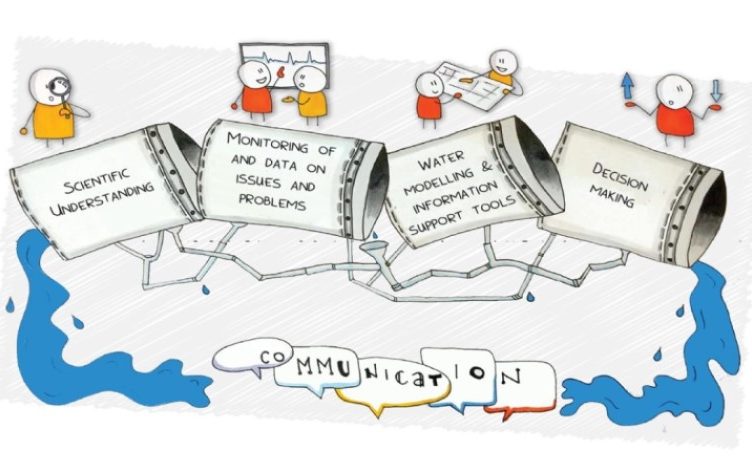
05/12/2024
Event Summary: Overview of water quality modelling projects from the Queensland Water Modelling Network with Callym Dunleavy
Read more
The QWMN through its Capability, Collaboration and Capacity Program (3CP) has an increased focus on strengthening Queensland’s water modelling pipelines. But what does this mean?
The water modelling pipeline representation (Figure 1 below) is a way of viewing the Queensland water modelling and use sector in terms of knowledge production flows and use
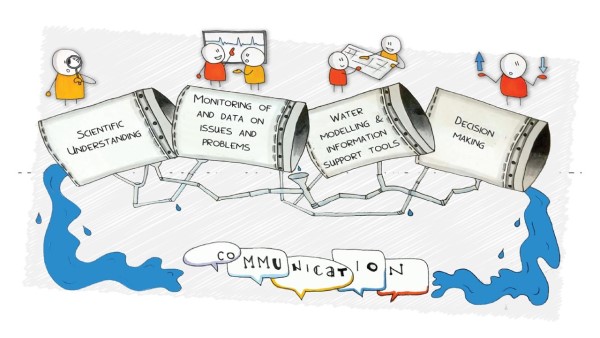
It differs from representing the sector structurally in terms of actor types and relationships (Figure 2 below).
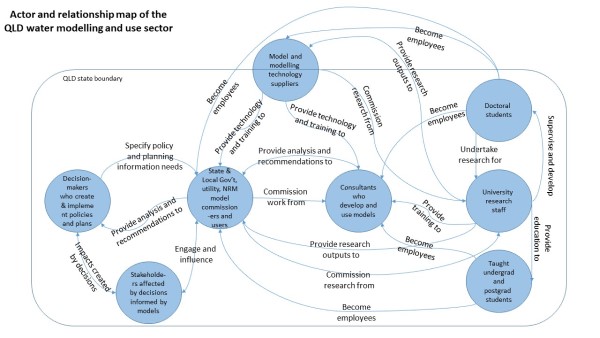
Instead of overwhelming the reader with many actors and (inter) relationships, the pipeline takes a simpler approach by depicting the knowledge production and supply functions that are essential to ensure that water modelling is able to service different policy, planning and management decision-making activities and needs.
It is important to note that there is no single pipeline for all the decision-making activities undertaken within Queensland which are informed by water models or modelling. Rather, there are multiple pipelines, each pipeline corresponding to a specific decision-making area or management theme e.g. surface and ground water resource planning and allocation, catchment planning and management, coastal impacts and adaptation etc.
Each pipeline includes a:
Behind or within the functions are people and organisations – a range of professionals from researchers to technology providers to decision-makers. The set of 4 functions that comprise each pipeline (see bullets above) may be more or less well developed in terms of capacity and how well they are connected to each other (i.e. working in awareness and tandem towards agreed common goals). Differences of functional capacity and connectedness are expected to impact the extent to which each pipeline can operate effectively as a knowledge production and supply system.
In one sense, water modelling pipelines represent the production and flows of knowledge between science and decision-making. Contemporary understandings of public policy and science emphasise that complex policy, planning and management domains like water management have multiple stakeholders involved both in decision-making and potentially being impacted by decisions made [1]. This feature has a bearing on how knowledge specification, production and flow between science and decision-making should occur.
There are often significant stakes associated with decisions (e.g. negative impacts on lives and livelihoods of stakeholders or on environmental values) and there may be complex and poorly understood trade-offs between decision options. Combined with significant uncertainty about how processes within those domains operate and play out (e.g. how climate change is likely to impact the water balance and hydrology of catchments and the consequences of this for water supply flood risk and aquatic ecosystem health), decision-making in complex domains has to be able to cope with both high stakes and high uncertainties. This means that we can’t assume traditional forms of scientific knowledge production will be effective ways of informing decision-making.
But what might that different form of knowledge production look like? It is useful to think of two contrasting scientific knowledge production processes [3, 2, 4] – see Figure 3 (below – from [3] – Ison et al 2011).
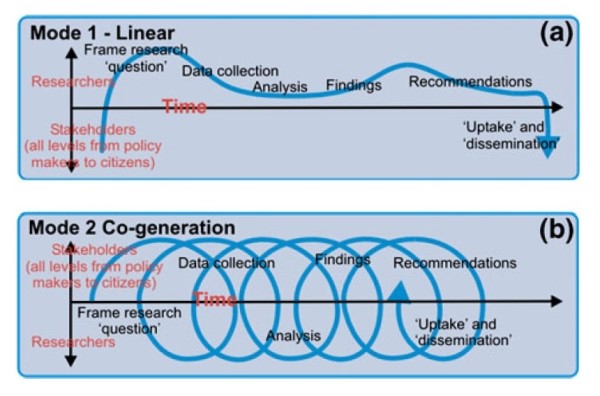
Mode 1 science is what we might label traditional science – it starts from a socially defined or recognised problem, and is then done in a relatively linear manner by researchers to generate reliable knowledge about objectively observable domains. It is suitable for relatively low-stakes domains where uncertainty can be reduced or overcome through systematic exploration e.g. laboratory and observational hypothesis testing.
Mode 2 science is different – it focuses on generating ‘socially robust’ knowledge about policy, planning or management domains where stakes and uncertainty are high and uncertainty potentially irreducible. Socially robust scientific knowledge is critical in such domains for stakeholders to accept both the basis for decision making as well as decisions made. As seen in Figure 3 the process of developing socially robust knowledge is a co-production process requiring both researchers and stakeholders (decision makers and decision impacted) to interact iteratively over time.
The QWMN over the coming year will build on existing Mode 1 capabilities and capacity to strengthen/fast track the development of Mode 2 capabilities and capacities across the Queensland Water Modelling and Use sector. It will do so by strengthening the required knowledge production systems of priority water modelling pipelines in Queensland. This will involve a range of activities focussed within particular pipelines as well as activities focussed across pipelines (see Figure 4 below).
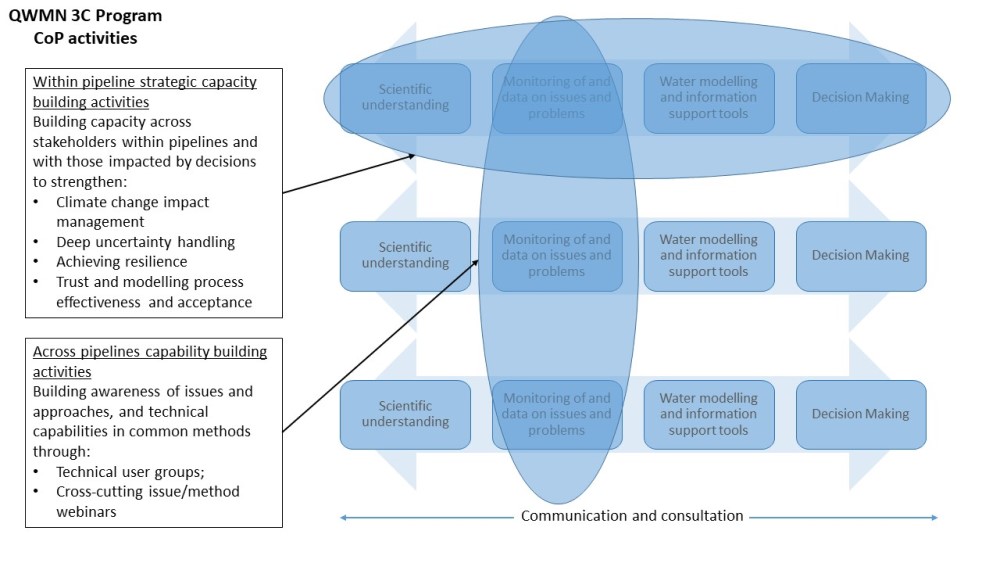
There are three pipelines that will be focused on, the first two corresponding to broader strategic RD&I priorities for the QWMN:
References
[1] Funtowicz, S.O. and Ravetz, J.R. (1993), Science for the Post-Normal Age, Futures, September 1993: y39-755.
[2] Gibbons, M, Limoges, C., Nowotny, H., Schwartzman, S., Scott, P. and Trow, M. (1994), The new production of knowledge—the dynamics of science and research in contemporary societies, Sage, London
[3] Ison, R., Collins, K., Colvin, J., Jiggins, J. , Roggero, P. P., Seddaiu G., Steyaert, P., Toderi, M. and Zanolla, C. (2011), Sustainable Catchment Managing in a Climate Changing World: New Integrative Modalities for Connecting Policy Makers, Scientists and Other Stakeholders, Water Resources Management, Vol. 25: 3977–3992.
[4] Nowotny, H. (2003), Dilemma of expertise. Democratising expertise and socially robust knowledge, Science and Public Policy Vol. 30:151–6